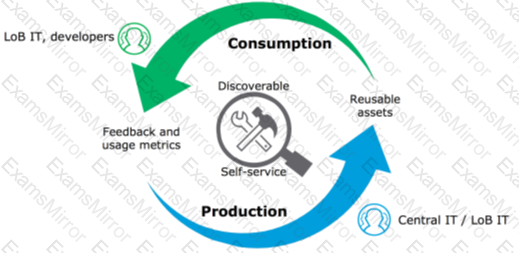Cyber Monday Special Limited Time 70% Discount Offer - Ends in 0d 00h 00m 00s - Coupon code = getmirror
Pass the MuleSoft Certified Platform Architect MCPA-Level-1 Questions and answers with ExamsMirror
Exam MCPA-Level-1 Premium Access
View all detail and faqs for the MCPA-Level-1 exam
659 Students Passed
84% Average Score
90% Same Questions
How are an API implementation, API client, and API consumer combined to invoke and process an API?
A large organization with an experienced central IT department is getting started using MuleSoft. There is a project to connect a siloed back-end system to a new
Customer Relationship Management (CRM) system. The Center for Enablement is coaching them to use API-led connectivity.
What action would support the creation of an application network using API-led connectivity?
When using CloudHub with the Shared Load Balancer, what is managed EXCLUSIVELY by the API implementation (the Mule application) and NOT by Anypoint Platform?
An API implementation is deployed to CloudHub.
What conditions can be alerted on using the default Anypoint Platform functionality, where the alert conditions depend on the end-to-end request processing of the API implementation?
When should idempotency be taken into account?
A Platform Architect inherits a legacy monolithic SOAP-based web service that performs a number of tasks, including showing all policies belonging to a client. The service connects to two back-end systems — a life-insurance administration system and a general-insurance administration system — and then queries for insurance policy information within each system, aggregates the results, and presents a SOAP-based response to a user interface (UI).
The architect wants to break up the monolithic web service to follow API-led conventions.
Which part of the service should be put into the process layer?
Which of the below, when used together, makes the IT Operational Model effective?
Due to a limitation in the backend system, a system API can only handle up to 500 requests per second. What is the best type of API policy to apply to the system API to avoid overloading the backend system?
A Mule 4 API has been deployed to CloudHub and a Basic Authentication - Simple policy has been applied to all API methods and resources. However, the API is still accessible
by clients without using authentication.
How is this possible?
A system API is deployed to a primary environment as well as to a disaster recovery (DR) environment, with different DNS names in each environment. A process API is a client to the system API and is being rate limited by the system API, with different limits in each of the environments. The system API's DR environment provides only 20% of the rate limiting offered by the primary environment. What is the best API fault-tolerant invocation strategy to reduce overall errors in the process API, given these conditions and constraints?
TOP CODES
Top selling exam codes in the certification world, popular, in demand and updated to help you pass on the first try.

 Diagram, arrow
Description automatically generated
Diagram, arrow
Description automatically generated